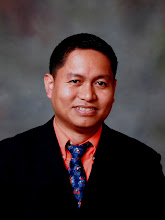Heibert's Thoughts On Cultural Anthropology
Political Organization. All people groups and societies include organization regarding political decision-making. Stabling political goals, authority, distribution of resources, duties, rewards, and social control constitutes responsibilities of the government (336-38). There are at least four types of governments: 1) Stateless societies among tribes, bands, and kinship groups; 2) States covering chiefs, monarchies, nations states; 3)Colonial governments linked with British politics; and 4)International governments (339-49). Any anthropological witness deals with the complex elements of societal leadership, power, control, manipulation, and the relationship between politics and government. It is governments that provide “the norms and structures for political activities,” but people’s behavior does not essentially mean compliance to the norms (352).
Worldviews. Natures of reality and ethics are basic assumptions of every worldviews. Such “existential postulations” can be implied (and taken for granted) or explicit. It is the peoples’ worldviews that order and give meaning to human existence and experiences (335-57). Worldviews vary; American worldview is poles apart to Indian worldview. American worldview is characterized with absolutes, naturalism, linear view of time, order and immutability, knowledge, particularistic and categorized world, equality, individualism, and competition. Indian worldviews is opposite; they believe in relativism, supernaturalism, cyclical view of time, mutability and unpredictability, wisdom, unit of all things, hierarchy, specialization and interdependence, patron-client relationship, and karma or cosmic law (358-60). Worldviews deals with methodology, philosophy, and ethics in all its complexities since there is no unified worldview in the world. Every culture has distinct worldviews. With the increasing international current of culture, idiosyncrasies are still present and cannot be ignored (369).
Religious Beliefs and Practices. It includes rituals and symbols as an expression of specific belief that explains the world. Meaning of rituals and symbols is tied in the context of the culture. Supernatural processes differ in their meaning and sometimes their relationship to humans is ambiguous. Even the attitudes of practitioners to rituals vary; sometimes, the same practitioner performing different rituals has different behavior towards to the diverse object of ritual expression. Hence religious beliefs and practices cannot be stereotyped; it must be dealt specifically. More often, the disintegration of culture is caused by the religious systems’ failure to satisfy and maintain the needs of the people. Any religious figure bearing higher explanatory systems can be a factor of change or transformation when the people are converted from their failing explanatory system (372-94).
Expressive Culture. Aesthetic senses are part of human nature. Inclined towards the appreciation and enjoyment of pleasure, excitement, and beauty, expressive culture contributes to “the meaning and satisfaction of life” (408). Through art and entertainment, values and ideas of culture finds expression and symbolism of itself. The combination of form and meaning is usually inseparable. Hence, arts and entertainment conveys the human feelings and ideas of a certain culture towards another society (400-07).
[1] Paul Heibert, Cultural Anthropology (Philadelphia: J.B. Lippincot Company, 1976), 335-410.


0 Comments:
Post a Comment
<< Home